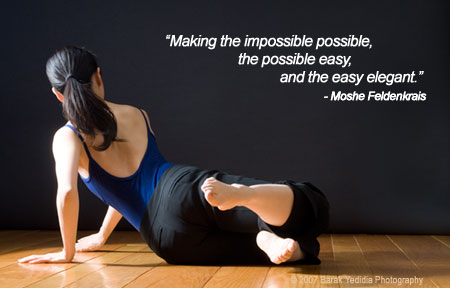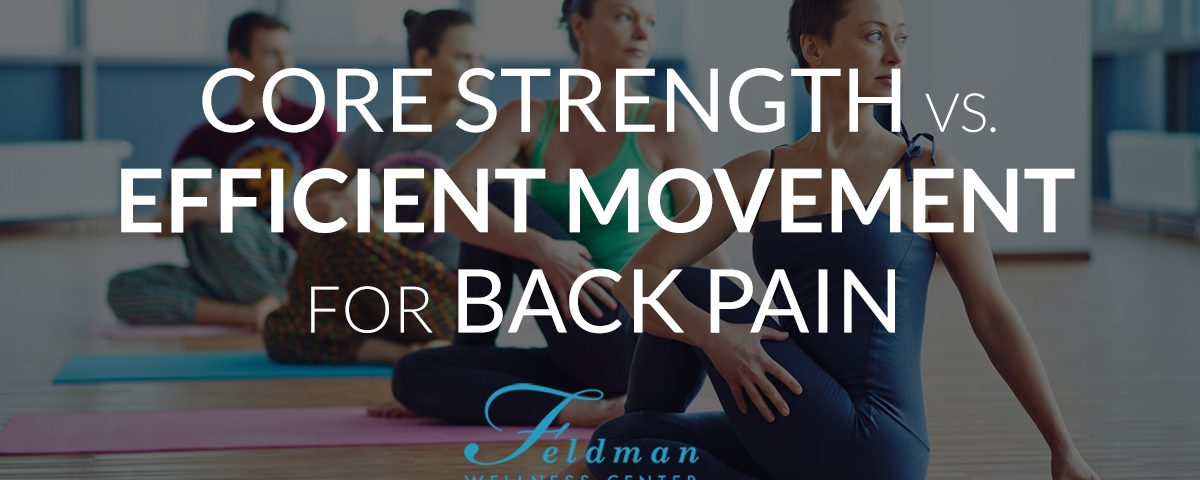
The Feldenkrais Method: A Whole Body Approach to Movement
February 12, 2018
Listening to the Whispers in Your Body
April 18, 2018Core Strength vs. Efficient Movement for Back Pain

The statistics on back pain are daunting. Low back pain is the single leading cause of disability worldwide. Back pain is the second most common reason for visits to the doctor’s office, outnumbered only by upper-respiratory infections. Experts estimate that as much as 80% of the population will experience a back problem at some time in their lives.
This leaves many searching for answers on how to prevent back pain, and what exercises one should do to protect oneself from constant pain. With a quick Google search, you will find countless articles on core strength training to prevent lower back pain. But, your spine is really only supported by those core muscles between your rib cage and your pelvis. Bad training can set you up for all sorts of lumbar problems.
Furthermore, core stabilization (even when done safely) does not wok for everyone. Most of the exercise programs you find are a one-size-fits all approach, and fail to address individual circumstances causing the underlying, chronic pain.
Melinda Glenister, a Feldenkrais and JKA Practitioner in the UK has spent nearly 20 years working with professional tennis players and other elite athletes after training to play professionally herself. She says, “I have worked with many people who have beliefs about the vulnerability of the back, including elite athletes, and people with back pain. I have also worked with many practitioners and teachers who have used core stability. I spent several years (before I was introduced to Feldenkrais) working relentlessly on my ‘core stability’ to try to counteract a chronic back injury I had sustained as a tennis player. Eventually, I came to the frustrating realization that it was not helpful, and even detrimental to my situation. It ingrained in me a huge amount of fear-based restrictive and protective movement habits and patterns, that were very hard to overcome. The Feldenkrais Method gave me the basis to work through this, freeing up my movement and opening my eyes.” (www.melindaglenister.com)
Core stabilization training tends to focus on just that: stabilization. This focus can cause rigidness and restriction of movement, which is not how our bodies naturally function.
Erin Ferguson (Body Wisdom Boulder), a Feldenkrais Practitioner for 17 years, elaborates on on more efficient movement.
“Muscles must work in tandem. Let’s talk about appropriate distribution of effort. If you can contract the abdominal muscles strongly, it doesn’t mean you can use them efficiently. Efficient movement comes from the complex system of interconnected muscles working appropriately, that is, contracting each according to their function and size. Strengthening the abdominal muscles does not help this happen. In fact, it can have profound negative functional consequences. Even the most developed muscles are of no use if they cannot coordinate with our intention to act in the world.”
“The [Feldenkrais] Method uses gentle movements as a way to improve the communication and connection between your brain and your body. The best way to get your brain to stop sending a repetitive ‘pain message’ is to help it learn what a ‘comfort message’ FEELS like. You can’t do that if you keep pushing yourself into pain.”, says The Feldenkrais Center of Houston. Get their Five Best Feldenkrais Moves for Back Pain Relief here.


